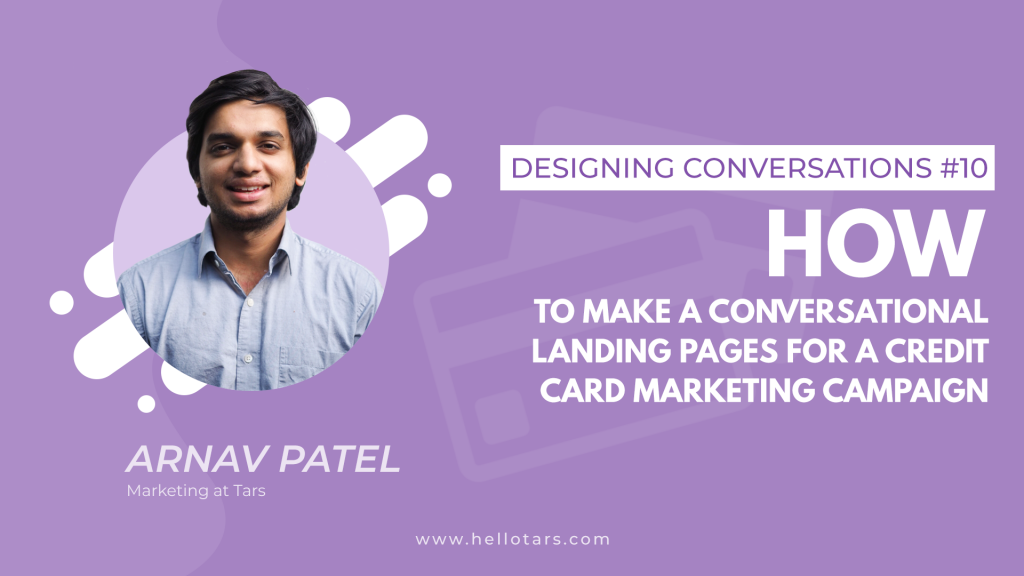Conversational landing pages are an effective way to engage customers and boost conversion rate.
Here’s how you can build one 👇
Try the Citi Conversational Landing Page: http://bit.ly/2VaA6u1
Examine the Citi Traditional Landing Page: http://citi.us/2WAnE8y
And read our written creation guide below 👇
Landing Page Assessment
In this guide, I transform Citi’s credit card landing page.
This page suffers from two major issues:
First, it’s too jargony.
Even if a lot of the terms on this page might seem basic, there are a lot of potential customers who don’t know what they mean.
Take my generation, millennials, as an example. A study from the National Endowment for Financial Education found that only 24% of us are financially literate.
This means that converting millennials using jargon-heavy pages like the one above is practically impossible.
Second, it uses an ugly form for lead capture.
No one likes filling out forms because they are just plain boring.
In the credit card industry this issue is especially pertinent because credit card forms are SUPER long.
The culmination of these two issues is an un-engaging, low converting lead generation experience.
Conversational landing pages fix these problems because they are by nature, built in the idea of using short, conversational language to engage prospects.
Creating the Conversational Landing Page
Our approach to conversational landing page design occurs in three stages:
- Hook
- Lead Generation
- Design
Here’s a breakdown of each one:
Hook
The hook is the first and most important set of messages that a user sees in your messaging flow.
The vast majority of visitors drop from a page within the first 7 seconds and optimizations in the hook will yield the maximum increase in conversions.
Here’s what a hook should look like 👇
So how can you optimize these messages for peak lead generation performance? Here are a few best practices that you should never forget:
- Use a logo in your welcome message. Academic research has shown that prospects apply human traits to logos as a way of personifying brands in their mind. This is especially useful if you run retargeting campaigns for dropped prospects.
- Don’t barrage prospects with text- It’s really quite unfortunate but people don’t read anymore. This is why we recommend restricting your hook to three tweet-length messages.
- Make your ask uncontroversial- If you start your conversation by asking for personal information it increases the likelihood of them dropping because people don’t like sharing information as soon as they land on a page.
Lead Generation
After you get the prospect to start the conversation, lead capture becomes easier, but it certainly isn’t guaranteed.
Chat-based lead capture is radically different than form-based lead capture.
Forms are inherently impersonal.
This means that it is socially acceptable for you to capture leads using blank fields with short labels like “Name” and “Address”.
In a conversation, on the other hand, you are restricted by the rules of customer service.
There are three simple best practices to keep your bot within these bounds:
Ask full questions
Imagine if you were manually collecting a prospect’s name over chat. How would you ask them for the information?
Would you say “Name?” or “What is your name?”
Probably the second one right?
Single-word questions are a relic of forms that you don’t want to transfer into your conversational landing page.
Your conversational landing page is a representative of your company and to provide good customer service it needs to ask full questions.
Acknowledge user input
If you don’t include spacer messages that acknowledge the user input, the lead generation flow feels less like customer service and more like an interrogation.
You want to avoid this because it comes across as rude and will result in a lower conversion rate.
Order your questions right
Through experimentation, some of our customers have found that certain ways of ordering your lead generation flow can be perceived as “sales-y.”
If you are careful to avoid these flows you can reduce the number of people dropping from your page without converting.
The two most obvious ways of doing so are to ask for name first, (because, in real human conversations, you always like to know who you are speaking to).
And to reserve questions about contact details for the end of the conversation.
Design
Conversational landing pages use text to convert prospects but this doesn’t mean you should neglect the aesthetic of your page.
The default chat design on TARS is the generic blue and gray color palette of Messenger and iMessage. Unless your Credit Card brand has the same brand colors, your page will look super generic if you don’t change it.
As I mentioned earlier…
Generic pages look spammy and spammy pages don’t convert.
We recommend making the bot messages your primary brand color and the user messages your secondary brand color, or if you have just one color, make both types of messages that color.

Arnav is the Director of Content Marketing at Tars. He spends most days building bots, writing about conversational design and scrolling through Giphy’s trending section looking for the gifs that go into the Tars Newsletter.

0 Comments on "[Designing Conversations] How to Make a Conversational Landing Page for a Credit Card Marketing Campaign"